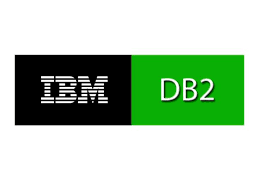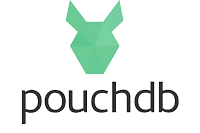PouchDB vs IBM DB2
DB2:

IBM developed the Database named DB2. It is a database that follows relational database management system principles. By using DB2, we can fetch the data, analyze it and store it efficiently. DB2 is based on Object-Oriented features and non-relational XML structures. It is a group of related data management products that include data servers developed and marketed by IBM. It is developed on a concept based on SQL, i.e., standard query language on the relational database system, which means DB2 uses SQL queries to retrieve and store the data into the Database. We can use DB2 on AS/400 IBM mainframe and personal computers.
DB2 also supports the storage of non-relational formats like XML and JSON DP. It is not open-source but provides some free distributions, and IBM fully owns it, and if we want to run on large servers should have to pay for the licensing.
Let's see some advantages:
DB2 has been around for years and has matured as a robust RDBMS.
1. Powerful Structures Query Language
2. Various Platform support.
3. IBM Support
4. Fetching of data is significantly fast
5. It provides high security
6. It is independent
7. It provides very high concurrency, Allowing multiple applications and users to access the data parallelly and Concurrently.
8. Redundancy is low
9. It provides flexibility with the designs
10 It offers easy access, and user is not required to know the physical relationships of the Database they wish to access
11. It is reliable, secure and offers high availability
12. It can efficiently handle large volumes of data
13. It can work with various operating systems
Disadvantages of DB2:
- The delivery of developer tools by IBM is late.
- The BIND is time-consuming
- It is a little behind in rolling out the next-generation features.
What is PouchDB?

It is an open-source database, and it is an in-browser database API that is written in JavaScript. It allows applications to store the data locally, which lets users enjoy all the application features though they are not online. Additionally, the synchronization of data between clients keeps users up to date wherever they go. It is a JavaScript implementation of CouchDB. It can be used locally in Node, also in browsers, and remotely through HTTP protocol. It is styled off on CouchDB, which is a NoSQL database.
To store the data, it innately uses WebSQL and IndexedDB.
By default, this Database uses an IndexedDB adapter for the browser, LevelDB adapter in Node.js, and CouchDB adapter for the remote databases.
We can run it in Node.js and use it as a direct interface for the CouchDB compatible server. This API is consistent with its working in all environments, so we can write clean code and not think about browser varieties.
Features of PouchDB
1. It supports Cross-browser; the API pouchDB provides work in various environments, which allows us to run PouchDB applications in different browsers.
2. It is Lightweight API; we can include it very seamlessly by use of script tag.
3. It is easy to learn if we have a knowledge of any of the programming languages, then we can easily learn PouchDB.
4. It is an Opensource application and is also available on GitHub.
Advantages of PouchDB
- As we know, PouchDb lives in the browser; we don't need to execute queries over the network, by which we can observe speedy execution of queries.
- We can synchronize the data with the supported server by which we can run apps online and offline.
| SR. NO | IBM DB2 | PouchDB |
| 1 | IBM has developed DB2 | Apache Software Foundation has developed PouchDB |
| 2 | It was initially released in 1983 | It was initially released in 2012 |
| 3 | The operating systems for DB2 windows, linux, HP-UX, Solaris, z/OS and AIX | The operating systems for pouchDB servers are serverless, and it requires a Javascript environment. |
| 4 | Primary database model is Relational DBMS. | Primary database model is Document Store |
| 5 | The data scheme is Schema Free | The data scheme is Fixed |
| 6 | It is implemented in Java, C, C++ and Assembly language | It is implemented in JavaScript language |
| 7 | It supports ACID transactions | It does not support ACID transactions |
| 8 | It supports foreign keys and Referential integrity | It does not support foreign keys |
| 9 | It supports Secondary Indexes with no restrictions | It has no support for Secondary Indexes |